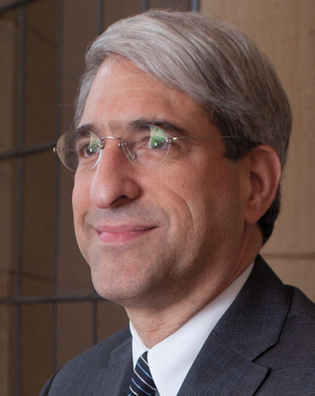 loading
loading
Q&A: Peter SaloveyGreenhouse gases and YaleThe president talks about Yale’s steps to combat climate change. Do you have a question for Yale’s president? Readers are invited to submit questions or topics to [email protected] or Yale Alumni Magazine, PO Box 1905, New Haven, CT 06509-1905.  Mark OstowView full imageY: The student group Fossil Free Yale asked Yale to divest from fossil fuel companies, a request turned down this fall by the Yale Corporation Committee on Investor Responsibility. [The Corporation is Yale’s board of trustees.] Yale divested from companies doing business in South Africa and Sudan. Why not this? S: The Corporation committee applies the guidelines laid out in The Ethical Investor, which was written by Yale Law School professor John Simon [’53LLB] and colleagues, and adopted by the Corporation in 1972. The committee agreed that the problem of climate change caused by greenhouse gas emissions represents grave danger to the future of humanity. But it concluded that this case was different from that of South Africa and Sudan. Applying principles of The Ethical Investor, it reasoned that focusing on fossil fuel suppliers ignores all of the other sectors that also cause carbon emissions. Instead of divesting, the Corporation committee urged the Advisory Committee on Investor Responsibility to support well-constructed shareholder resolutions on climate change at companies more broadly, and established guidance for that. And it noted that there are many things the university can do to reduce our own greenhouse gas emissions and to impact climate change more generally as part of Yale’s core mission. Y: And Yale took another step on investments. S: Yes, David Swensen [’80PhD], as the chief investment officer, has written to all of the external managers who oversee a piece of Yale’s endowment. He essentially said that they should look at the carbon footprint of companies they are investing in, and take into account the cost of potential regulation as they make investment decisions. We also wanted to show leadership in how Yale advances sustainability on our own campus, to build on the considerable progress we have made since 2005. We announced six initiatives, including a task force, chaired by Sterling Professor of Economics Bill Nordhaus [’63], which will study the feasibility of an internal carbon tax on campus. Virtually all economists who work on climate change believe that carbon charges are the way to change behavior. We hope to be able to offer the campus as a laboratory. In addition, we’ve announced a $21 million investment in energy conservation and greenhouse gas reductions campus-wide. We’re also going to be deploying more renewable energy sources—we have a solar array going up on the West Campus, for example. The fourth element is third-party verification of our greenhouse gas inventory. For the fifth, we will fund fellowships for students, faculty, and staff who have ideas for green innovation. And finally, we’re working on action plans in each of Yale’s professional schools to reduce greenhouse gas emissions. Y: Is that $21 million a new investment? Yale has long had a very ambitious greenhouse gas plan in place—to cut emissions 43 percent below 2005 levels by 2020. S: Yes, it’s a new earmark. And we’ve made important progress. Our campus is 14 percent bigger now than it was when we set the goal, but our greenhouse gas emissions are 16 percent lower than they were in 2005. Y: How will Yale get from 16 to 43 percent in just six years? S: We’re going to have to keep working hard. The second phase of our plan, from 2013 to 2016, focuses on the way we build buildings, on the materials we use in buildings, on food and food waste, and on individual behavior. The other great thing Yale can do is to be a leader in research and teaching on these issues. We have the School of Forestry and Environmental Studies. Our School of Management is looking at green business practices and our School of Engineering and Applied Sciences at sustainable practices and new kinds of fuels. We have the Yale Climate and Energy Institute, and we have a Department of Chemical and Environmental Engineering. We also have an Energy Sciences Institute looking at new kinds of fuels—for example, trying to create an artificial photosynthesis system that makes fuel from sunlight. I’ve met with some of the student leaders of Fossil Free Yale, and I know they’re disappointed in the decision about divestment. But it is my hope that they will view the six initiatives, plus the endorsement of shareholder proxies and David Swensen’s outreach to Yale’s endowment managers as a responsible and forward-looking set of responses. Y: The greenhouse gas reduction plan itself was put into place due to a report produced by students. S: That’s right. Student input has always been critical on this issue. This is as it should be. They are the next generation of leaders, and they will be living in an environment shaped by greenhouse gases—long after our generation is past-tense.
The comment period has expired.
|
|